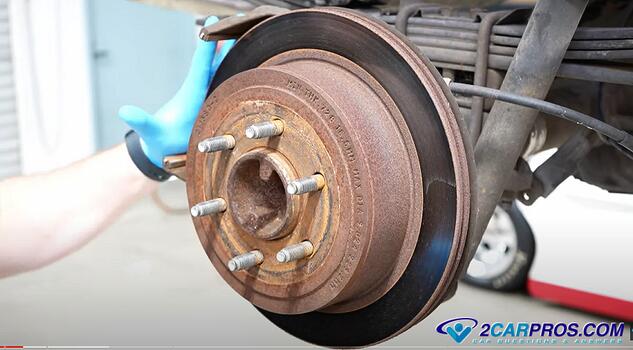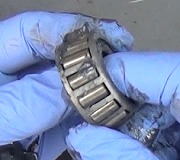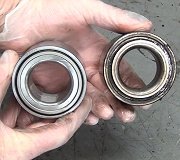Introduction
An automotive brake rotor can be fitted to the front or rear of your vehicle, and can cause real problems when they malfunction as they are a crucial part of the braking system. The brake rotor is a circular cast piece of durable steel which has been machined to fit onto the bearing hub or spindle which the brake pads use to help stop the car through friction.
Recognizing the symptoms of a bad brake rotor early can help you avoid more severe problems and costly repairs down the line. In this guide, we will go over the top symptoms of a bad automotive brake rotor.
Brake Rotor Basics
Brake rotors can either be solid or ventilated depending on the application and design. Replacement costs for brake rotors have come way down in recent years and replacing them has become the preferred method over resurfacing.
There is a minimum thickness measurement requirement designed to uphold rotor performance integrity. Once a rotor reached this minimum measurement it must be discarded or they can discolor and warp due to heat.
Bad Brake Rotor Symptoms
1. Steering Wheel Pulsation or Vibration During Braking: Yes, this is the most common occurrence when a front brake rotor is bad. This sensation is often described as a "pulsing" or "shaking" and is caused by the clamping force of the brake pads which will try to hold the rotor straight or "true", the steering wheel in turn will have a shaking sensation especially at higher speeds due to heat warpage and must be replaced.
2. Low Brake Pedal: A warped brake rotor can cause the brake pedal to become low or in extreme cases the pedal will go to the floor. This is because when the brake are not being used the warped rotor is forcing the brake pads back into the caliper causing an air gap, which then will need to be pumped back up to regain brake pressure.
3. Squealing or Grinding Noises: When applying the brakes the brake pads are pressed against the brake rotor, if a brake rotor is subjected to prolonged overheating conditions it can destroy the rotor by crystallizing the rotor's metal composition causing hot spots, cracking and discoloration which will produce a squeaking or grumbling sound when the brakes are applied.
4. Brake Pad Chatter: Dirt or small rocks can becoming lodged between the brake pad and rotor, which can create visible grooves that can inhibit the brake pads from "floating" inside the pad carrier. This will cause the brake pads to "chatter" both when applying the brakes, or when the brakes are at idle.
5. Poorly Executed Brake Job: If the brake rotors are not replaced or re-machined during a brake job the bake pads cannot mate or "break in" properly, which can lead to glazing that can cause squeaking and grumbling. This is known as "slap pads on it" and is the cheapest way to do a brake job.
6. Overheated Brake Rotor: Surface cracks or discoloration on the brake rotors are clear signs of heat damage. These issues can occur due to excessive heat buildup, often from aggressive driving or repeated hard braking. Examine the rotors for any signs of discoloration, such as blue, purple, or dark spots.
7. Brake Fade: Brake rotors can have slots or holes, which help remove heat but when excessive heat saturation has occurred by aggressive braking it will cause the brakes to stop working even though you have good brake pedal. This is why rotors have a minimum thickness measurements to indicate replacement is required. Brake fade is a condition that will hinder the brake performance until the brake rotor has cooled.
8. Pulls to One Side While Braking: When a brake rotor is not uniform in its braking surface, it can cause the car to pull to one side or the other as the brake are applied. Uneven rotor wear can cause an imbalance in braking force, leading to the vehicle pulling to the side of the less effective rotor.
Conclusion
Identifying the symptoms of a bad brake rotor is crucial for maintaining your vehicle's safety and performance. Never take chances with your car's braking system, if you suspect there is a problem perform a brake inspection or take your car to a qualified mechanic for repairs to help ensure that your vehicle remains safe and reliable on the road.
Watch the Video!
Please watch this video of the job being done to glean additional helpful information.
Credits
This guide knowledge base was created by the 2CarPros Team, and by Ken Lavacot: Automobile repair shop owner and certified master automobile technician of over 30 years. If you have question or need help please ask one of our experts we are happy to help. Please visit our 2CarPros YouTube Channel for additional car repairs.




